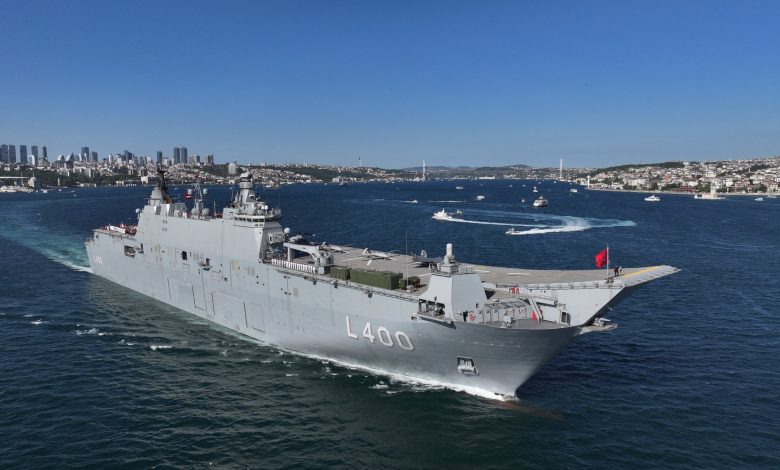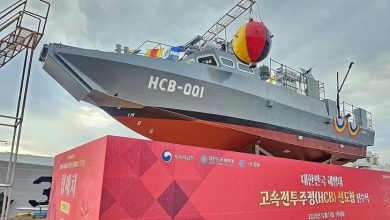Türkiye’s drone carrier can sail Istanbul-New York roundtrip without refueling

Türkiye’s first domestically built amphibious assault ship, dubbed the world’s first drone carrier, is capable of sailing from Istanbul to New York and return without refueling, according to an engineer.
An engine for the TCG Anadolu aircraft carrier was selected based on a cruising range of 10,000 nautical miles, Engineer Lieut. Commander Aykut Demirezen said Thursday.
The ship’s intermediate propulsion system and main engines were chosen after examining the systems of aircraft carriers worldwide and tailoring them to meet Türkiye’s specific needs, Demirezen told Anadolu Agency (AA).
He spoke on the sidelines of Teknofest’s maritime edition, the premier technology event. The four-day event, known as Blue Homeland, is being held at the Istanbul Shipyard Command. The festival began Thursday, and the public will be able to attend on Saturday and Sunday.
The TCG Anadolu was commissioned in April 2023 to become the flagship of the Turkish Navy. It was built in collaboration with Spain’s Navantia, based on the Juan Carlos I-class design.
Its deck will mainly be occupied by drones and unmanned fighter jets and the vessel will serve as a multi-role platform for amphibious operations, disaster relief and drone-based warfare.
President Recep Tayyip Erdoğan on Wednesday confirmed plans to build a new and even larger aircraft carrier.
Demirezen noted that aircraft carrier studies began with determining the configuration of the auxiliary propulsion system, calling it a very important element.
He said they designed the chemical, biological and nuclear (CBRN) systems, adding they ensured personnel could perform their duties safely by maintaining a certain atmospheric pressure on the ship against toxic or suffocating gases that could form during such attacks.
Engineer Lieut. Commander Burhan Savran noted that they designed the electrical system of the vessel.
He explained that the design included an electrical infrastructure capable of powering all systems and devices on the aircraft carrier, such as lighting, heating, ventilation, air conditioning, communication and weapon systems.
“We calculated the required generator capacity and number by performing load and power analyses to ensure that all these loads can be supplied redundantly,” Savran said.
“As a result of the calculations, the installed power of our national aircraft carrier is 40 megawatts. This value is also approximately 3,000 times the electrical power we need in our homes.”
In other words, the vessel has the capacity to power 3,000 homes simultaneously based on its installed power, according to Savran.
Sourcee: Daily Sabah





